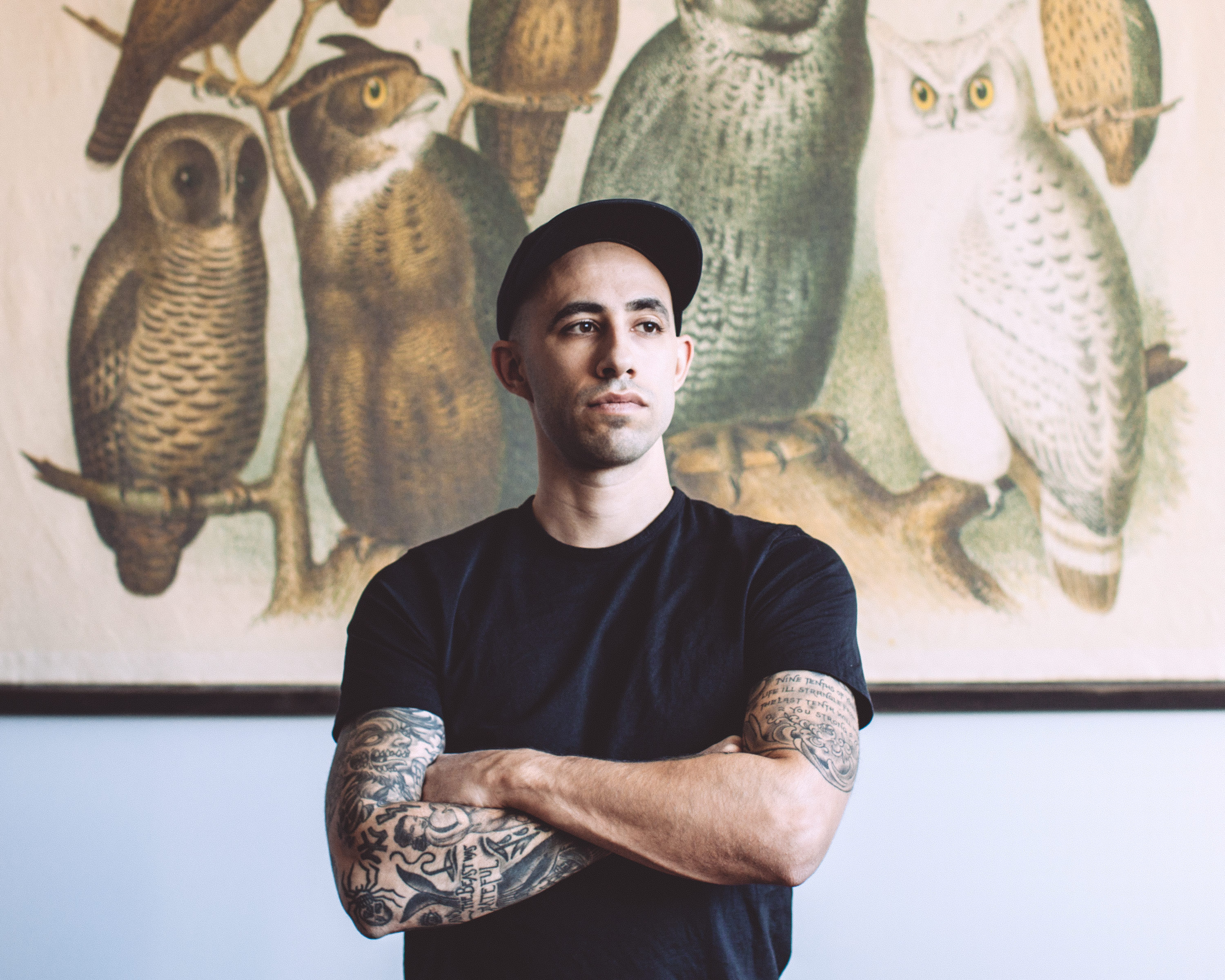
- Interview by Tina Essmaker November 6, 2012
- Photo by Catalina Kulczar
Jon Contino
- designer
- illustrator
New York native Jon Contino is widely known for his uniquely distinct style. Handy with pen and paper, he’s scribbled and sketched for companies like Nike, 20th Century Fox, Ford, American Eagle, and Jack Daniels. Over the last two decades, his work has appeared on magazine covers, shirts, album jackets, and national ad campaigns. In addition to running his studio, Jon is founder and creative director of Contino Brand menswear, cofounder and creative director of CXXVI Clothing Company, and brand manager for Past Lives. He lives in New York with his wife, Erin, and their daughter, Fiona.
Interview
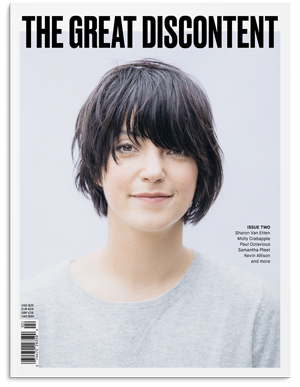 Editor’s note: An updated version of this interview, including new images and work, is featured in print in The Great Discontent, Issue Two, available in our online shop.
Editor’s note: An updated version of this interview, including new images and work, is featured in print in The Great Discontent, Issue Two, available in our online shop.
Describe your path to becoming an illustrator.
I come from a long line of artists. When I was little, I specifically loved drawing letters and logos—I don’t know why, but I was always attracted to that. My mother and grandmother are both artists; my father is a carpenter; and my grandfather carves sculptures. There’s a lot of that kind of creativity in my family, so I think it was easier for me to be nurtured in that way. Early on, my mother saw that I was into art, so she pushed and taught me. She would go to the deli and get rolls of butcher paper and I’d draw on it like crazy. I learned calligraphy, cross-hatching, and other techniques from her. The rest I learned from copying my favorite cartoon characters, movie posters, and sports team logos.
I focused on drawing for a long time until I got closer to my teens. Then I forgot about it for a while. I played sports and went through a few awkward, angst-filled teenage years when I started playing in hardcore bands. Once I was in a band, we needed tee shirts, demos, and flyers. I found myself saying, “I know how to draw,” and that’s when I got back into art. Our band began to play more and more and our friends’ bands who got picked up by indie labels or started playing with bigger bands needed artwork. I somehow weaseled my way into doing artwork for a lot of them and that made me want to become a package designer. I really admired the work of Asterik Studio, which is now Invisible Creature—those guys were my idols. I only wanted to do music packaging, but by the time I was able to be a grown-up professional, the opportunity was gone because the industry had changed so much.
After high school, I went to a local college—not an art school. I made friends with all the teachers and they let me do my freelance work during class, so I basically got paid to go to school. (laughing) There were a lot of things I still had to learn though—the business aspect, printing techniques, and other stuff—but that just comes with experience.
I started freelancing immediately after college. When you leave school, you’re conceited. I saw other people who were making money and I thought, “I’m better than those guys and I’ll make twice as much as them.” I tried the freelance thing, but I couldn’t get it together—I had no clients and no money. I ended up taking a job at a local agency that served only financial advisors and every client wanted the same thing done in the same way. It was very limiting and I was out of there after two months. The next job I took was for a print broker that did design on the side. Everyone who worked there was a designer, but the majority of their money was made from designing and printing club fliers, so it wasn’t the exact position I was looking for. I also took on some pet projects and got a taste of doing some cool stuff and actually making money. About a year after that, I decided to open up my own studio and try my hand at it because I was done working for someone else.
Once I was working for myself again, I started to really pick up on typography and hand-lettering. I began doing some tee shirt designs for small clothing brands and learned from trial and error. I also picked up a few retainers and had a set amount of money coming in every month. Because of that, I started getting lazy and lost that sense of urgent originality I once had. However, the recession took care of that for me by closing all the companies I had retainers with. My comfort went out the window and I had to work a lot harder for the money and figure out how to get new clients. It was a struggle.
Then, a few years ago, my business partner and I decided to start a clothing company just to see what would happen. We piggy-backed materials off of another order we were working on and quickly put up an online store and sold some stuff. People got really interested in it and that led me to a realization—I could do the things I wanted to do and there was a market out there somewhere for it. Starting a clothing company allowed me to art direct products and as that gained steam, I was able to pick back up with freelance work. I got back into illustration and lettering and focused on that—that was around 2009 and I’ve been going nonstop with design, art direction, and consulting since then.
I’ve noticed that the more personality I put into my work, the more people respond to it. I’ve realized that I don’t have to try to only do what others expect from me or what I expect to get paid for. I had always wondered how people got such great clients like Coca-Cola or Nike or MTV. I worked so hard to get the dry-cleaner from down the block to hire me. I remember going to a friend’s party and being asked by someone what I did for a living. I said, “Oh, I’m a graphic designer,” and she said, “So, what have you done that I’ve seen?” I replied, “You haven’t seen any of it.” That wasn’t where I wanted to be—I wanted to do stuff that people would see, but I never imagined I would get to the point where I could do stuff and people would say, “That looks like a ‘Jon Contino.’” It took a lot of perseverance and hard work to get to that point. It’s all thanks to failing time and time again.
That’s great. So, you’re still doing the clothing company and you freelance in addition to that?
Yeah. The clothing company was my full-time job for a while, but now we have someone who takes care of licensing and sales. I don’t have to worry about talking to buyers and placing orders anymore, thank god. I do the design and art direction for CXXVI, but it doesn’t take up as much time as it used to. It’s about 95% freelance and 5% clothing company for me right now.
“…the more personality I put into my work, the more people respond to it. I’ve realized that I don’t have to try to only do what others expect from me or what I expect to get paid for.”
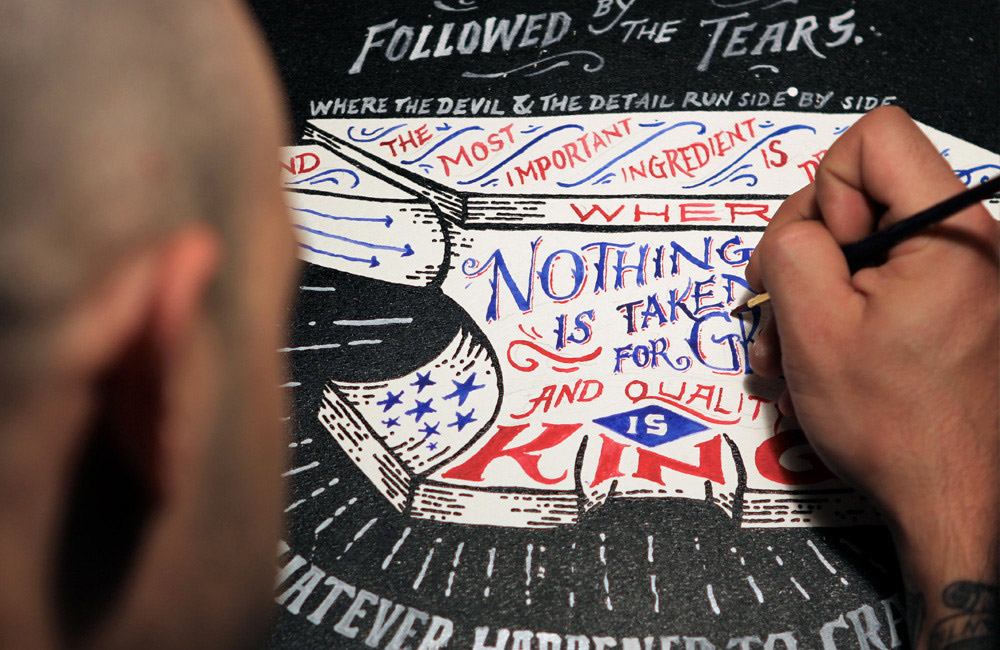
That’s quite a path. Did you have any “Aha!” moments along the way when you knew you wanted to do illustration?
I always wanted to be an illustrator and I never thought I had what it took to actually illustrate. I was always very interested in fine art, but the things I was good at were design and layouts and composition. I couldn’t find a style I could easily do. I had bouts of being obsessed with other illustrators and artists, but I couldn’t emulate their styles enough to become happy with it. That turned out to be a great thing because I ended up developing my own style, which is much more comfortable to me.
I think the biggest “Aha!” moment I ever had about doing what I wanted to do full-time was when I got a call from Ogilvy Paris about a project for Coca-Cola. They were launching a new soft drink in Europe and asked me to design a font for the campaign. It was this massive thing and I remember sitting on the phone call with them—Ogilvy Paris was leading it and Monotype was doing the programming of the font. Here were these two huge players saying to me, “Whatever you think is right. We trust you; you know better than us.” That’s crazy. Once I finished the project, it hit me and I thought, “If I can get a couple more jobs like that, I could really have something here.”
I took that as the major “Aha!” moment and after that, I threw everything out the window. For lack of a better term, I said, “Fuck it!” I started doing what I liked; I put together a portfolio of stuff I liked, which had never sold before. I showed some people my work and even though the illustration and lettering was really crude compared to what I do now, I got paid for it. I realized I had something going and used it as a springboard to get bigger jobs. That Coca-Cola project gave me the confidence to do what I wanted to do.
We love your style. Your work has a unique feel and it’s cool to hear that although you struggled to get there, you kept pushing.
It’s the only thing I could ever see myself doing. I knew I had a voice and style, but it was so hard to produce that style. It took a long time, but I knew it was there and I hoped I could eventually get to it. It’s a painful path when you have an idea in your head and start to draw it, but it doesn’t come out the way you envision—it’s so frustrating. I have a better understanding of how to communicate my ideas, but I still struggle every single day. As soon as I stop struggling, I’ll be dead.
What degree did you end up getting in college?
I got a BA because the school didn’t offer a BFA at the time. There were a few teachers in one floor of a building and that was it. It was really great though.
One of the professors I remember most was a figure drawing teacher named Tom McAnulty whose class I took four times. He explained the basic form of the human body by taking a piece of chalk and drawing lines on himself. It was a weird way of breaking things down. When you envision something in your head and start to draw it, your first instinct is to just draw what you see, but it’s more about drawing the skeleton of what’s there and then fleshing it out. I still use that technique today and it’s all because of him. I’ll never forget that.
“I’ve always used competition and doubt as my mentors…People think it’s a pipe dream to be an artist for a living—proving them wrong is the biggest motivation for me.”
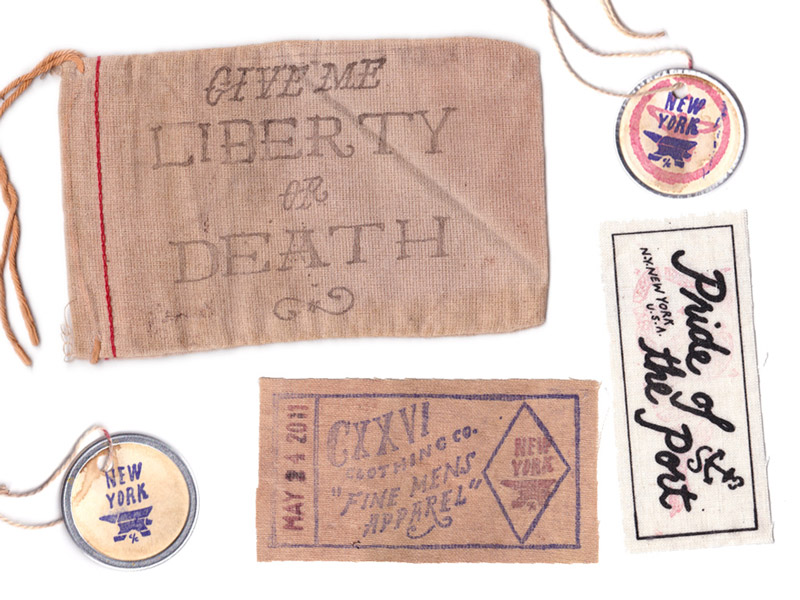
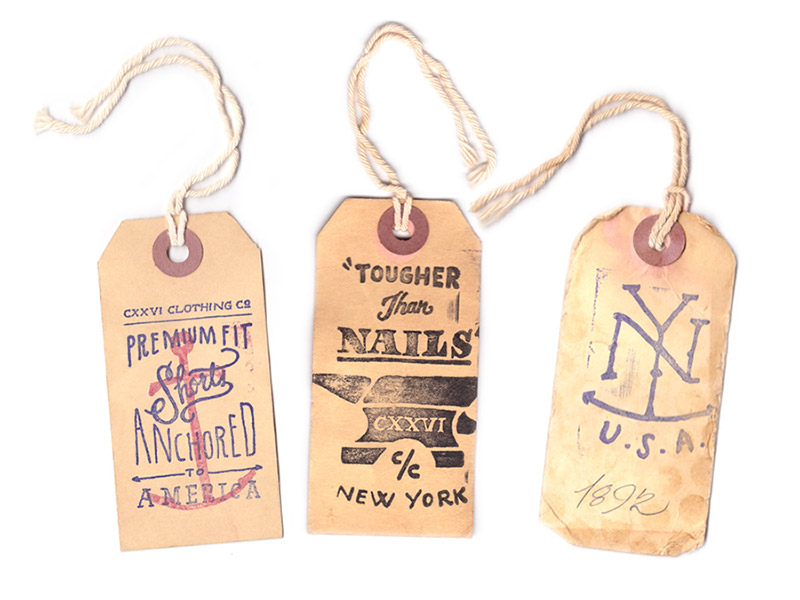
One of the questions we like to ask is about mentors. You already touched on that in talking about your professor. Is there anyone else who has mentored or inspired you along the way?
You know, I hate to say it because it sounds obnoxious, but I didn’t really have anyone who mentored me in any specific way. I had people who helped me along the way. For example, I did an internship with the guy who designed the compact disc logo—that was his claim to fame. I interned with him for a few months and learned a lot about the business aspects of design.
I think my parents have been the biggest influence on me because they were always really supportive. They are both creative and they just let me do my thing and find my own creative path, which was the best thing they could have done for me.
My biggest mentors though were the people who told me I couldn’t do something or gave the impression that if I didn’t go to an expensive art school or get a fancy internship, I wasn’t going to be as good as those who did. I’ve always used competition and doubt as my mentors; they loom over my head like a dark cloud and drive my determination. People think it’s a pipe dream to be an artist for a living—proving them wrong is the biggest motivation for me.
Did you grow up in Brooklyn?
No. I grew up in Nassau County in Long Island, which is the West end of Long Island and closest to the city. My family is from all over the city though—Queens, Brooklyn, Manhattan—a very typical Italian thing. All my family came over from Sicily in the early 1900s or so and lived in Little Italy. Once they grew out of there, some moved out to Brooklyn. The rest of the family scattered around the boroughs, but mostly to Queens. My immediate family is from Queens and right before I was born, my parents moved a few miles east to Nassau County. I grew up there and call it home, but spent time in all the boroughs because I still have family and friends in all five of them.
What was it like growing up there and was creativity a part of your childhood?
Creativity was a big part of my childhood. I’m the oldest of three brothers and my second oldest brother was born with Down syndrome and a heart defect. He was on his deathbed so many times and my parents were with him at the hospital a lot. Many of my earliest memories are of waiting in the hospital and then going home with my grandparents. I guess that’s where drawing came in. Creativity kept me from seeing how terrible things really were at the time. Now that I’m older and my brother is okay, my mom and dad can have honest conversations with me about what was going on at that time.
Growing up, my youngest brother and I had to make sure that nothing happened to our middle brother. A lot of people would pick on him or try to take advantage of him. We actually moved because I would get into fights all the time. I would beat kids up at the bus stop because they would say wise-ass things about my brother. It was tough. Kids are cruel and I didn’t want to be like that, so I learned very early on to accept people for who they are. All of that changed my outlook on life, especially when I was really into sports and kids would get competitive and nasty. It wasn’t anything I could relate to.
Also, a lot of times my parents had to work because they had plenty of hospital bills to pay. I’d stay home and take care of my brother, so what else was there for me to do? I wasn’t a big video game guy and I couldn’t leave the house, so it was just back to drawing. That has always been the outlet for me to stay away from the tough parts of life. I think a lot of my creativity comes from having a unique childhood. Don’t get me wrong, it was a really good childhood, but it was definitely unique. If I had had a different family who didn’t encourage me to express myself through art, who knows?—I could be in jail right now.
Drawing was very therapeutic for me. I used to get anxiety attacks all the time because I had seen my brother in the hospital for years. I thought I was next and worried all the time about what might happen to me. I would lose myself in drawing and stop thinking about everything else. It was like creating another world to live in with things I wanted to see and do. Thank god I had that.
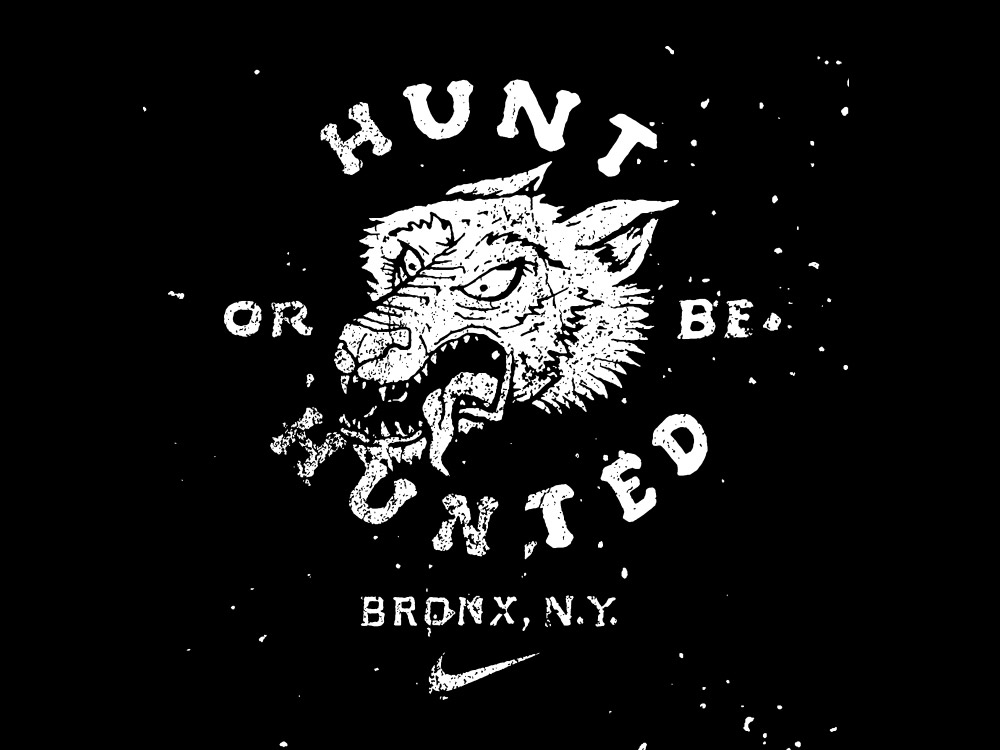
I have a twin brother who has a developmental disability, and I relate to what you said. I can recall kids picking on him or people making rude remarks in public. I was, and still am, very protective of him.
Yeah. If you go into the store or the mall or something, people just stare. I got accustomed to saying, “What the fuck are you lookin’ at?”—it could have been the family crest. (laughing) No, but it’s good to be able to talk to someone who understands it because that’s not an easy way to grow up.
No, it’s not. It definitely gives you a different perspective on life.
Yes, it does—so much.
Was there a point in your life when you decided you had to take a big risk to move forward?
Definitely. I met my wife Erin five years ago when she was living in Greenpoint and I was still in Long Island. After four months, I knew I wanted to marry her and I proposed. We got engaged and moved together to Long Beach. Then, when I started the clothing company, the only place my partner and I had to work out of was on the North Fork of Long Island. We moved out there for a year to work on the company and I just wasn’t happy there. My wife and I were about to get married at the time and I wasn’t making any money, which made paying the bills next to impossible. I told her that we had to go back to Greenpoint and she whole-heartedly agreed, so that’s what we ended up going. I barely had enough money to afford an apartment, but we picked up and moved anyway. I took $2,000 out of the money we got from our wedding and bought an iMac with it. I decided to just start working all the time in hopes that work would pick up—and it did.
Well, it paid off.
Yeah, it did. It could have ended ugly. (laughing)
You already talked a lot about how some of your family has encouraged you. Are the rest of your family and friends also encouraging?
I mean, there are people in the distant family who say, “You can’t make money being an artist,” but my immediate family and my wife and her family are supportive. I’ve never shared much of my work with friends. I was just always a goofball with them. Family is the most important to me and I wouldn’t have anything if I didn’t have them. We’re very close and very supportive of each other and that’s what it all comes down to.
My wife and I are actually expecting our first child and I’m really excited about it.
Congrats!
Thanks. My wife—I always call her my art director because she keeps me on track and helps me keep it together. She’s very inspiring to me. Once my daughter is born, I think she’ll add even more inspiration on top of that.
I’m sure she will. Do you feel a responsibility to contribute to something bigger than yourself?
That’s an interesting question. I just want to make a dent. I don’t know if it’ll make anything better or worse, but I’d like to have an impact in one way or another. I would love it if something good came out of that, but contributing to a greater thing? I don’t know—we’re all humans; we all contribute whether we like it or not. As long as I contribute something that’s positive, I’m happy.
Are you satisfied creatively?
No. Definitely not. There’s no way it’ll ever happen. I get to do stuff that I enjoy, but there are so many things I could be doing that I either don’t have the time for or don’t yet have the skills for. I am satisfied to the extent that I’m in a position where I get to decide what I want to do. Years ago, I didn’t have that luxury. In that sense, I’m happy, but there are still people who don’t know my name, companies I haven’t worked for, and things I haven’t done yet. I think that if you’re an artist and you’re satisfied, then you’re a failure—honestly. There’s more out there than you could ever imagine. If you’re satisfied, you’re done being an artist.
On that note, do you have any thoughts about what you might like to do in the next 5 to 10 years?
I used to have plans about where I wanted to be and those didn’t work out. As soon as I started living day to day, all these things I had hoped for started becoming more of a reality. I don’t even think about it anymore. I have no idea, but I hope that I’m doing something I like and can give my family a good, comfortable life.
“Family is the most important to me…We’re very close and very supportive of each other and that’s what it all comes down to.”
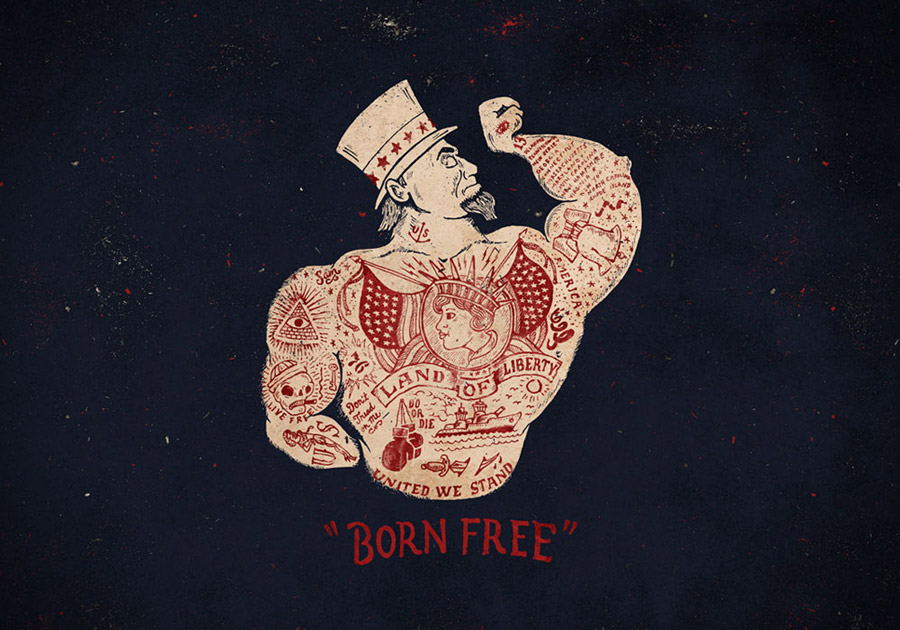

If you could give one piece of advice to a young illustrator starting out, what would you say?
It’s funny. I do a lot of lectures now and students often want feedback on what they’re doing. The thing is that everyone is a different person and there are different ways to get to the end results. I can’t tell them, “This is how it’s done; this is what you gotta do.” The only thing I can really say is be a good person, work as hard as you can, and give as much care as you can to the work you do. As cliché as it sounds, follow your heart and do what you want to do. As soon as you start doing what you want to do, you become a happy person and that confidence will come out in your work and people will notice it. It’s that chain reaction of I like what I do; I’m good at what I do; you like what I do; I like working with you; let’s do something together.
If you’re in a creative industry—which we are—then why did you get into it in the first place? Because you wanted to be creative. I think a lot of people in our world spend the majority of their lives listening to what other people tell them to do without ever pushing the boundaries. Everything hasn’t been done; there are still things out there that people are going to discover and create—anyone can be that person.
How does where you live impact your creativity?
We spent a few years in Greenpoint, Brooklyn and that was great because I’m a city guy all the way. New York City runs through my veins. I love the pace—nothing is too fast for me. My wife is from Upstate NY in the Hudson Valley and we just bought a house up here. I was afraid that it was going to completely shut me down, but at the same time, as we started talking more and more about it, I started to feel a little jaded by that city vibe where everyone is competing to basically do the same thing. I needed a new challenge.
We actually don’t even live that far from the city, but it’s far enough to make a difference. It’s given me a whole new burst of creativity. There are woods; I see deer all over the place; every time we’re driving, I stop the car and point out animals. It’s so new to me and I find it really inspiring. It also feels older to me because it’s a simpler style of life. It lets me open up more and gives me more time to think. It certainly reduces my stress level, which is great. It’s the best of both worlds.
My parents still live in Long Island and I’m in Manhattan and Brooklyn all the time. I get to experience a little bit of everything that New York has to offer and I absolutely love it. I love the history of New York—the city and the state as a whole. This is just a new part of New York for me to explore.
Is it important to you to be part of a creative community of people?
Not really. It’s funny because I was just having a discussion with a few friends of mine who are illustrators. They were trying to get me to come out to an event. I never go to anything—I like to just work. It’s nice to be a part of a community, but at the same time, the aspects of community life in an industry or scene can yield more annoying things than positive things. When you first encounter it, it’s great because you find people who like what you like. Then, in no time, you’re competing with each other for work or attention. I love competition, but if I’m going to have friends, I don’t want to be competing with them all the time. I like that there is a community I can draw from and spend time with, but I also like to have time away.
What does a typical day look like for you?
Oh man! A typical day usually starts with me waking up somewhere between 8:30am and 10:30am. I get up and go straight to my home studio and start working immediately. After an hour or two, I realize I didn’t brush my teeth, so I go do that. Then it’s lunchtime, so I eat and go right back to work. By the time I stop working it’s usually dinner time. I hang out with my wife for a little bit and then I go back to working. It usually ends somewhere between 2:00am and 5:00am and then I go to sleep and get back up and do it all again.
What are you currently listening to?
I’m a drummer so I like stuff that’s very percussion-based—hardcore, metal, and prog. The new Mars Volta, the new Between the Buried and Me, and The Faceless’ new album. Those are my three that I’ve been obsessed with and looping.
“As cliché as it sounds, follow your heart…As soon as you start doing what you want to do, you become a happy person and that confidence will come out in your work…”
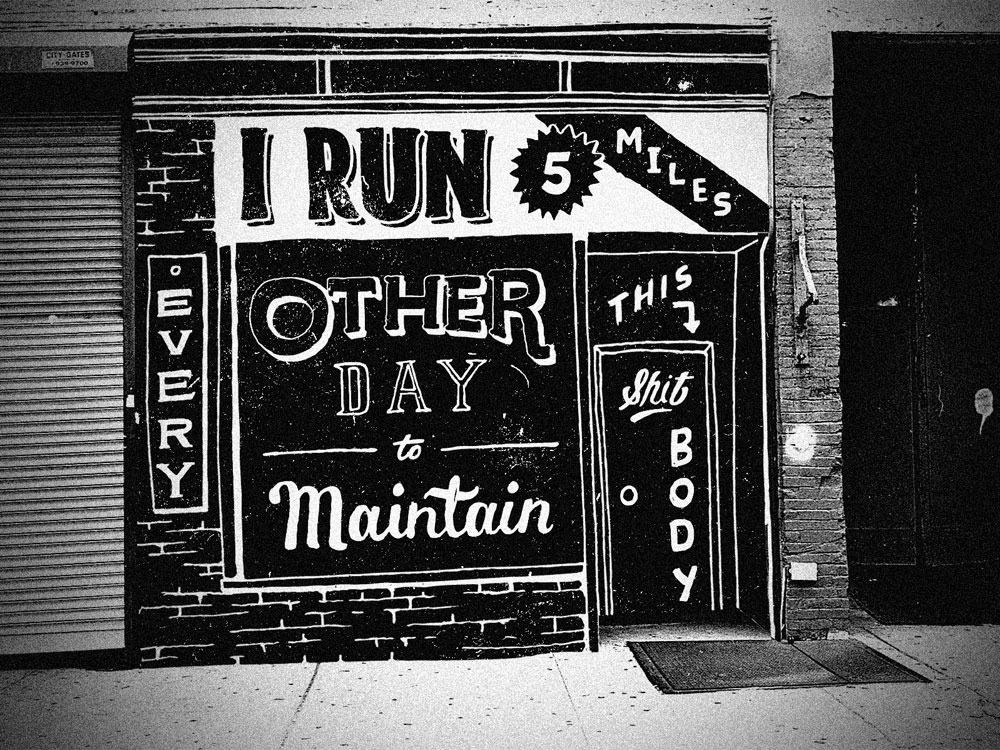
Do you have any favorite TV shows or movies?
Totally. Boardwalk Empire is unbelievable. It’s everything that I like—gangsters, the 1920s, the beach, old hand-painted signage—and it’s done in a very aesthetically pleasing style. It’s the most satisfying thing for me to watch on all levels.
My favorite movies are Ghostbusters and The Godfather. As a kid, I had a VHS tape of Ghostbusters and I totally wore it out from watching it too much. My mom had to buy another copy for me.
Do you have a favorite book?
Nope. I’m not a reader. I don’t have the patience for it. If I named a favorite book, it would probably be Charlie and the Chocolate Factory or something. I loved that book when I was a kid.
What’s your favorite food?
Spaghetti.
Really?
Yeah. I grew up in an Italian household and would eat macaroni and spaghetti four days out of the week. Even now, I could eat it every day of the week. Although, I also love a good Italian hero—I think I’m going to change my answer to that. One birthday when I was younger, my mom got a 6 foot long hero and I literally ate it for a week straight. (laughing)
That’s dedication.
I enjoyed every minute of it, too!
One last question for you. What kind of legacy do you hope to leave?
Oh man. There’s this guy named Brian Awitan who is one of the best people I’ve met in recent memory and he is a consultant for a lot of major brands. You name it, he’s done it. Everyone listens to what he has to say because he knows his stuff. He brought the idea of legacy into a new perspective for me. I asked him how he was so nice after all these years in a such a mean-spirited industry and he said, “I think of it this way. When I’m dead and in a box and my kid is standing up in front of it talking about my life, is there going to be anyone there? Are they going to say nice things about me now that I’m gone?”
I think about that all the time. I would love to be known as someone who did what he loved and what he wanted to do without stepping on anyone’s neck to get there. If I’m going to succeed, I want to do it in a positive way and leave a good impression. If people can say, “He was a nice guy and he did what he loved,” that’s all I can really ask for. It’s important that I don’t lose that sense of who I am just to get somewhere. Integrity— that’s what I would want my legacy to be.
